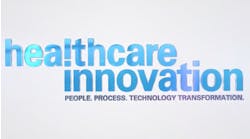IBM has released the results of new research using deep learning and visual analytics technology to advance early detection of diabetic retinopathy (DR), a diabetes complication that affects the eyes.
The research found that a new method created by the IBM team achieved an accuracy score of 86 percent in classifying the severity of the disease across the five levels recognized on the international clinical DR scale (no DR; mild; moderate; severe; proliferative DR). Potentially, this research could have the impact of helping doctors and clinicians have a better view of disease progression and determine treatment, according to officials.
For background, diabetic retinopathy is one of the world's leading causes of blindness and affects one in three of the 422 million people who suffer from diabetes globally. If left untreated, diabetic eye disease can lead to permanent blindness, however early detection and treatment can reduce the risk of blindness by 95 percent.
Currently, DR is diagnosed through regular screening of diabetes patients, where an expert clinician examines specialized fundus photography of the retina to identify the presence of lesions. Interpreting these images requires specialized training and is often a manual, time-intensive and subjective process to rate them for the disease presence and severity, according to IBM researchers.
Based on more than 35,000 eye images accessed via EyePACS—a technology solution designed to help prevent vision impairment from diabetic retinopathy by linking primary care providers with eye care specialists—the IBM technology was trained to identify lesions such as micro-aneurysms, haemorrhages and exudates to indicate damage of the retina's blood vessels and assess both the presence and severity of the disease. The method for classifying the severity level of DR combines deep learning techniques, convolutional neural networks (CNN), with a dictionary-based learning to incorporate DR specific pathologies. Over time, IBM research scientists will look to continue to advance the system to increase its understanding of diabetic retinopathy and the pathologies manifested in the retina from the disease, officials noted.
With 12 collaborative labs worldwide, IBM Research is focused on research projects involving medical imaging analysis for diseases such as melanoma, breast cancer, lung cancer and eye disease.
"The alarming projections of the number of patients with diabetic retinopathy have major implications for the health system. The loss of vision from the condition can impose an enormous burden on the individual, including a loss of capacity to work and the need for intensive community support," Dr. Peter van Wijngaarden, principal investigator at Centre for Eye Research Australia, Department of Ophthalmology, University of Melbourne, said in a statement. "To substantially reduce the number of people unnecessarily losing vision from diabetic eye disease, there is a real need for innovation to improve effective screening of those who are at risk to enable early sight-saving treatment."

